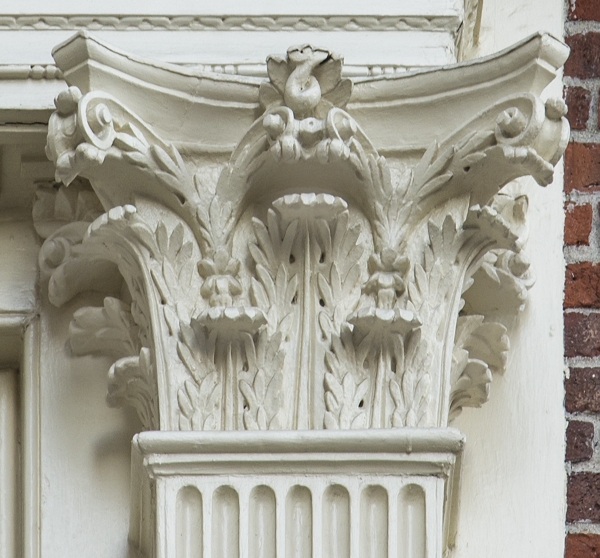· 5 ·
Boston or New York?
Revisiting the Apthorp-Family and Related Sets of Queen Anne Chairs
PHILIP D. ZIMMERMAN
An article by Leigh Keno, Joan Barzilay Freund, and Alan Miller entitled “The Very Pink of the Mode: Boston Georgian Chairs, Their Export, and Their Influence,” published in American Furniture in 1996, radically changed a segment of early American furniture history by reassigning the geographical origin of a large body of Queen Anne chairs from New York to Boston. New England Furniture at Winterthur (1997), by Nancy Richards and Nancy Goyne Evans, and a follow-up article in American Furniture by Keno and Freund reinforced this viewpoint, and it has been reiterated in many subsequent museum labels and several other publications.1
The narratives presented by Keno, Freund, and Miller are complex and wide ranging. The authors provide many historical citations, descriptions of historical context, and observations about the physical features of the chairs in question. In contrast, the argument behind the narratives is not complex. In rejecting the status quo, the authors state unequivocally that relying on provenance as a basis for establishing a place of origin for these chairs is flawed, a theme that other writers have since endorsed.2 Unfettered by family histories, just two statements drive the article forward: “The carved details on the chairs [the set owned in the Apthorp family (fig. 1)] provide conclusive evidence that they were made in Boston,” followed by, “The carving is attributed to John Welch (1711–1789), the most prolific carver (fl. 1732–1780) in pre-Revolutionary Boston.” The carved crest rail of an Apthorp family chair and the frame from John Singleton Copley’s 1769 portrait of Jeremiah Lee are the evidence cited for attributing the work to Welch. A second comparison of the carving involves the claw-and-ball feet of the Apthorp chairs that are declared “virtually identical” to those of a Massachusetts card table identified as descending in the Dalton family of Boston. Building on these two carving relationships, the authors link many chairs, tables, and case pieces to Welch.3
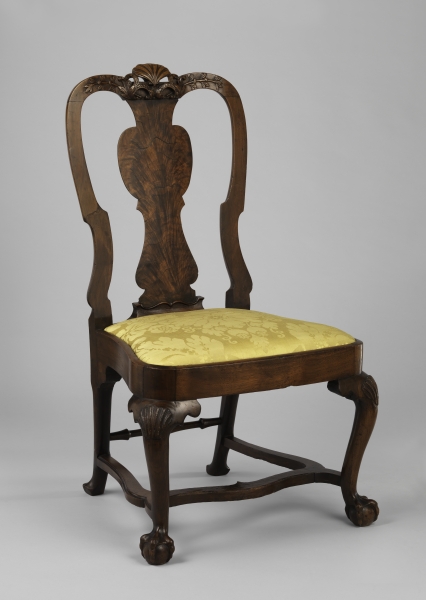
FIG. 1. Side chair, New York, ca. 1755. Black walnut, maple, white pine; h 35⅝, Seat w 20¾, Seat d 18½. Metropolitan Museum of Art; Gift of Mr. and Mrs. Benjamin Ginsburg, 1984 (1984.21).
Although the argument put forth by Keno, Freund, and Miller encompasses a large body of furniture, the discussion in this essay will focus on the Apthorp and related chairs, which form a core group, currently represented by fifteen different sets.4 Several other, somewhat simpler chairs create a broader category of seating outside the core that is essential to understanding it. Core chairs with histories of ownership include these:
- • Set of eight side chairs owned in the Apthorp family.5
- • Set of six side chairs owned in the Fayerweather-Bromfield family. One chair, owned by the Museum of Fine Arts, Boston, bears the ink inscription “Capt Fayerweather” on its slip-seat frame.6
- • Pair of side chairs owned in the Schuyler-Davis family. One chair is stamped “XII,” with a slip seat numbered “XI.”7
- • Seven side chairs owned in the Yates and Aspinwall families. One chair is stamped “X.”8
- • Two side chairs owned in the Baldwin family of New York City, reportedly part of a set of twelve. One surviving chair is stamped “X.”9
- • A set of at least nine side chairs owned in the Van Cortlandt and Van Rensselaer families.10
- • Pair of armchairs owned in the Stephanus Van Cortlandt and Van Rensselaer families. The armchairs are stamped “VIIII” and “X,” indicating a probable set of eight side chairs and these two armchairs.11
- • A side chair seemingly en suite with a settee owned in the Beekman family. The chair is stamped “II”; the slip seat is “VII.”12
- • Two side chairs with no known history of ownership, but one was photographed before 1896. The chairs are numbered “IIII” and “V.” The two chiseled chair numbers are very different, suggesting that these two very similar chairs may represent two different sets.13
All of these core chairs (with and without family histories) are closely related in design, construction, and materials. All have compass seats and similarly shaped splats—what Nancy Evans describes in New England Furniture as “a bold, bulging, apple-shape element supported on a short baluster.”14 Notable, too, are cusps that separate the two large massings of the splat. Double-curve rear stiles echo the splat, with pronounced lobes in the stiles that project outward just above the seat rails. The following design features also define this group
- • Chair backs are broadly proportioned.
- • Eight of the fifteen chair sets have veneered splats.15
- • Rounded and tapered rear legs end in square feet.
- • Shoes at the base of the splat have opposed double-ogee beads (popularly called cupid’s bows).
- • Knee brackets end in pronounced lobes.
- • Chairs without rear stretchers have brackets in the back facade (visible in fig. 4 below).16
- • Nine of the fifteen chair sets have no stretchers. Two sets have a single turned stretcher between the rear legs. One chair set has unusual flat and shaped stretchers. The remaining three sets have turned stretchers that differ from one another.
Four construction features define these chairs:
- • The shapely, double-curve rear stiles are made with laminations in which material is glued to a side to build it out, thereby saving wood. Laminations typically occur on the inside curves, sometimes also on the outside, and at the outside curves just above the seat rail.
- • The shoe is integral with the rear rail instead of being a separate piece of wood attached to the top of the rail (fig. 2). Three sets of chairs, one of which is upholstered over the seat rails, have separate shoes.17
- • The front knee brackets are not the conventional single block of wood but are made in two pieces: the inner block is typically tenoned into the back of the front leg, and the outer block is glued and/or nailed into its recess (fig. 3). Shaping of the inner block mimics the outer.18
- • The rear side brackets are made of two pieces of walnut (or other primary wood). The upper piece, being immediately below the side seat rail, is tenoned into the rear stile and pegged in place. Wood grain runs horizontally (in the same direction as the tenon). The lower piece is merely glued and/or nailed in place. Its grain runs vertically (fig. 4).
These construction details are rarely seen on other American seating and never in combination.
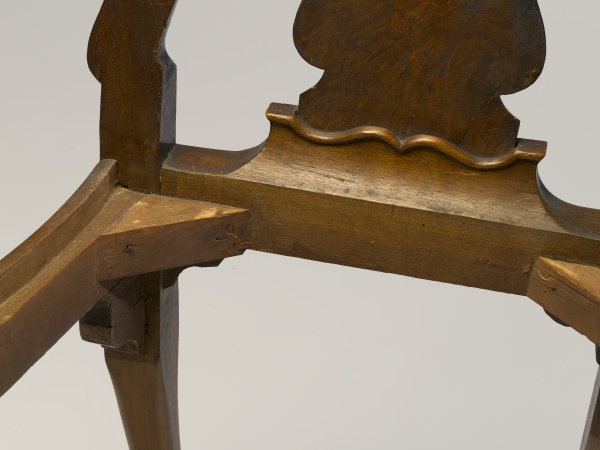
FIG. 2. Detail of one-piece shoe and rear seat rail of the side chair from the same set as the chair in fig. 5, New York, ca. 1749. Black walnut, maple, white pine; h 38¼, Seat w 22, Seat d 21½. Brooklyn Museum; H. Randolph Lever Fund (68.182.1).
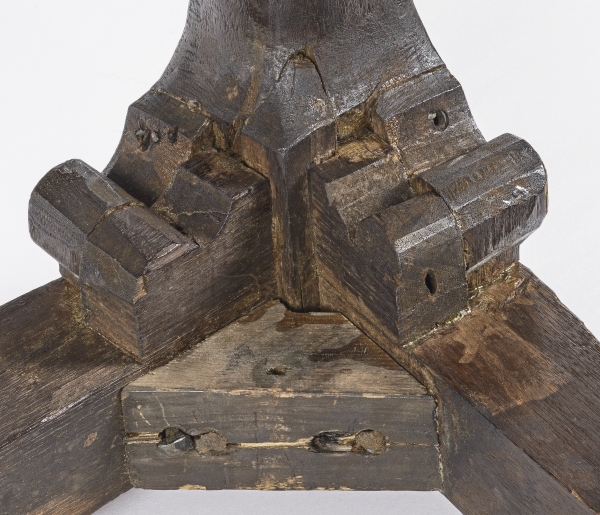
FIG. 3. Detail of two-part front knee brackets with tenoned inner block of side chair, New York, 1745–55. Black walnut, maple, white pine; h 38⅛, Seat w 21, Seat d 18⅝. Private collection. Photo, Winterthur Museum. This chair closely resembles one at Winterthur Museum that is pictured in Nancy E. Richards and Nancy Goyne Evans, with Wendy A. Cooper and Michael Podmaniczky, New England Furniture at Winterthur: Queen Anne and Chippendale Periods (Winterthur, Del.: Henry Francis du Pont Winterthur Museum, 1997), 48–49, cat. no. 26.
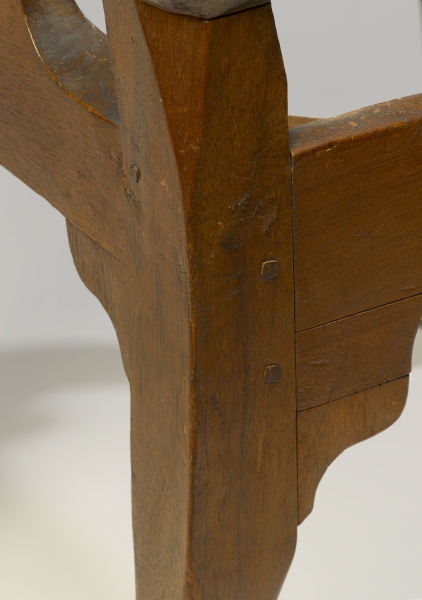
FIG. 4. Detail of rear bracket below seat rail of the side chair from the same set as the chair in fig. 5. Brooklyn Museum; H. Randolph Lever Fund (68.182.1).
Most of these chairs are made of walnut, the prevailing wood of choice for American furniture of the 1730s, 1740s, and early 1750s. Most splats are figured walnut veneers on maple, although the Baldwin-owned set is made of mahogany and has a mahogany veneer on a cherry splat.19 Two other mahogany sets without figured veneers are represented by a chair in the U.S. Department of State and a privately owned side chair, which has turned stretchers.20 One other chair set is made of cedrela, also with a solid splat. Slip seats are generally made of maple, except that red gum is used in the pair of Van Cortlandt/Van Rensselaer family armchairs; glue blocks are white pine. The Beekman settee, with rear facade brackets and carved legs as on several side chairs, adds birch and cherry to the mix.21 Of all these secondary woods, none points exclusively—or even persuasively—to either New York or Boston except red gum and cherry.22 Red gum has not been found in any Boston furniture and is a reasonable basis for assigning those armchairs firmly to New York.23 Similarly, cherry is not a secondary wood associated with Boston furnituremaking.
Regarding patterns of wood use, Keno, Freund, and Miller state that maple is “commonly found in New England furniture,” and that “like many eighteenth-century Boston chairs,” the Apthorp and other chairs have maple slip seats. Their argument continues: “New York chairmakers were far less regimented in the construction of slip seats and were more likely to use oak, cherry, tulip, or gum than maple. The formulaic approach of Boston’s chairmakers may have been in response to the high volume demands of the export trade.”24 Obviously, if the core chairs were made in New York, then one needs to add maple to the list of likely New York slip-seat woods. Maple occurs in New York seating, including William and Mary framed chairs and turned chairs, as well as in slip seats made for some Queen Anne and Chippendale chairs.25 Similarly, birch, used in the Beekman settee, does not necessarily point to Boston or New England origins, for it occurs in several important pieces of New York furniture.26 The concluding “formulaic approach” statement may be true, but reference in this context assumes that these elaborate chairs were made in high volume, for which there is no evidence.
None of the core chairs is signed or otherwise documented to its maker. None can be dated by evidence that exists independently of style analysis and other conventional—and sometimes problematic—dating techniques. Many of the chair sets have histories of ownership in specific families. One chair (fig. 5), now at the Museum of Fine Arts, Boston, has the name “Capt Fayerweather” written in ink on a slip seat, which is upholstered with original needlework. One of a set of six, the chair reportedly descended through the Bromfield family of Boston. Bromfield and Fayerweather lineages intersected in 1749, when twenty-two-year-old Henry Bromfield married seventeen-year-old Margaret Fayerweather. Margaret’s father, John Fayerweather, has been identified by furniture historians as the aforementioned captain, although that title seems to have referred more commonly to his father, also named John, who died in 1712. Regardless of the uncertainty about the captain’s identity, this set of chairs has a believable Boston history that leads to Margaret.
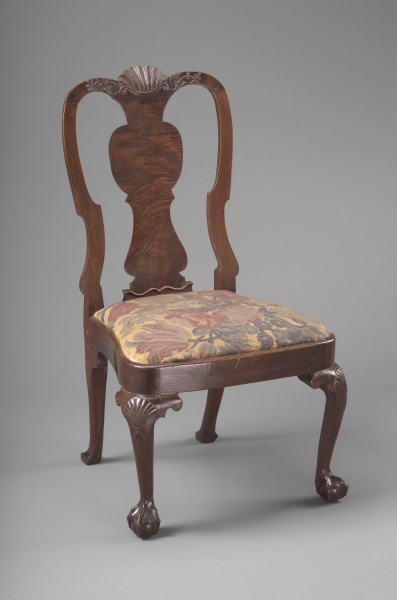
FIG. 5. Side chair, New York, ca. 1749. Black walnut, maple, white pine; h 38½, Seat w 22, Seat d 18⅜. Museum of Fine Arts, Boston; Gift of Mrs. Jean Wagniere, in memory of her mother Henrietta Slade Warner (Mrs. Henry Eldridge Warner) (68.839).
The 1749 date of the Fayerweather set suggests an approximate date for a second set—the one owned in the Schuyler-Davis family. Splat veneers on chairs from these two sets display the same grain pattern, indicating use of the same walnut log in their manufacture.27 A third set, owned in the Van Cortlandt family, may have been owned originally by John Van Cortlandt (1721–1786), who married Hester Bayard (1730–1808) in 1749 and lived in Manhattan.28
The set of eight Apthorp chairs has a tradition of ownership in the Apthorp family based in part on a paper label, written in the late nineteenth or early twentieth century and pasted to the seat frame of the Metropolitan Museum of Art’s chair.29 The particular path of descent—and especially original ownership—has not been verified by independent evidence, such as documentation in probate records; instead, it rests on assumptions about the age of the chairs. Charles Apthorp (1698–1758) lived and died in Boston. Charles Ward Apthorp (1726–1797), his son, married Mary McEvers in New York City in 1755 and moved there permanently shortly thereafter. Keno, Freund, and Miller state that the chair set was made in Boston about 1735 for the elder Charles (when he would have been thirty-seven). That early date for this claw-and-ball-foot chair is crucial to the authors’ argument, because the older he gets, the less likely a prominent, well-established man would have needed to purchase such a set of chairs. But the date is problematic on grounds of style analysis. The London prototype the authors illustrated and dated 1725 to 1735 is, according to recent scholarship, likely ten year later.30 In contrast, 1755 may seem late, especially given popular expectations of pierced splats by then, but it is the more reasonable date in light of the Fayerweather chair history and the other two sets, which suggest manufacture around 1749. Regrettably, then, the Apthorp ownership history does not point persuasively to either Boston or New York.
The other core chair sets with accompanying histories of family ownership firmly place them in New York City and environs, Albany, or locations in between. Uncertainties exist regarding which branch of large families originally owned the chairs in question. In some families, such as the Aspinwalls, Beekmans, and Van Cortlandts, the different branches lived in the same general locale. In contrast, Van Rensselaers lived in New York City and Albany; Schuylers lived in New Jersey west of Manhattan and in Albany; and different Baldwin families lived in New York City, nearby New Jersey, and other places. But despite some ambiguity in ownership histories, the preponderance of evidence is clear: geographical distribution of chair ownership, represented in figure 6, creates a pattern that highlights the first of two significant logical fallacies in the “Boston Georgian Chair” argument, either of which nullifies the conclusion that the chairs were made in Boston. To accommodate New York ownership histories of these supposedly Boston-made chairs, the authors identified them as being made for export, and to support that claim, they introduced an elaborate theory of what they termed “export-grade” seating. They bolstered their position by citing all sorts of data about Boston chair production, shipping records, merchant activity, and the like. Their interpretation of these chairs as export-grade seating represents a second logical fallacy.

FIG. 6. Locations of original owners of chairs. The two red stars indicate owners in Massachusetts, while the blue stars denote New York-area owners.
Furniture historians have firmly documented Boston’s role as a center of trade and a regular exporter of furniture throughout the eighteenth century. But if these particular chairs were made in Boston, then why did the makers export them only to New York? Setting aside the problematic Apthorp chairs, why do none of the many chair sets—other than the Fayerweather set and a single chair photographed in the Nathan Osgood Collection in Salem, Massachusetts, in 1896—have ownership histories that tie them to any other locale in America?31 The earliest comprehensive records of Boston furniture exports, namely the 1744 Boston Custom House clearances, list dozens of chairs and other furniture forms that were shipped from Boston to many places up and down the coast—from as far north as Nova Scotia and Newfoundland to Charleston, South Carolina, and the West Indies (fig. 7).32 These records establish patterns of trade that are diffuse, extend along the coast, and follow well-established trade routes. This and related evidence is both commonsensical and commonplace in the historical record. Even exports from a single shop exhibit similar diffusion. For example, New Yorker Duncan Phyfe’s (1768–1854) well-documented sales, covering the first half of the nineteenth century, provide some of the earliest and most comprehensive evidence of a furnituremaker whose reputation spread far beyond his local market. His customers ranged from Boston to Savannah to St. Francisville, Louisiana (some thirty miles above Baton Rouge).33 To assume that certain Boston makers of stylish mid-eighteenth-century chairs represented an exception to otherwise universal export patterns requires readers to take an unreasonable leap to follow the argument.

FIG. 7. Boston clearances in 1744, citing furniture exports.
The second fallacy, the argument that these ambitious chairs were export grade, violates another axiomatic circumstance. Wherever and whenever evidence of original ownership exists, the best Boston case furniture inevitably was made for sale and use in Boston and environs. On what basis should Boston-made seating be treated differently? There is no instance in all of early American furniture history in which a furnituremaking community exported its finest wares rather than sold them locally.34 Instead, manufacturers of all kinds of goods typically dumped their lesser-quality and surplus wares on outside or distant markets.35 This practice holds for other domestic trades as well as for other countries.
The carved, walnut-veneered, compass-seat Georgian chairs with double-curved rear stiles were very elaborate and must have been costly. Boston-area counterparts with compass seats, represented by figure 8, had an elaborate, but differently shaped, splat. Rear stiles had only a single curved segment and were fabricated with only one lamination to build out the dimension; stretchers reinforced the legs. Several progressively simpler and cheaper types of Boston chairs were made. Elimination of the curve in the rear stile and of carving in the crest rail yielded a less expensive chair. Chairs with squared, rather than compass, seat frames reduced the cost significantly, though the inclusion of such chairs in portraiture still signaled pride of ownership.36 Simple framed chairs with plain feet were reasonably attractive and priced. Ample evidence confirms that these kinds of chairs were sold locally and routinely exported from Boston (fig. 9).
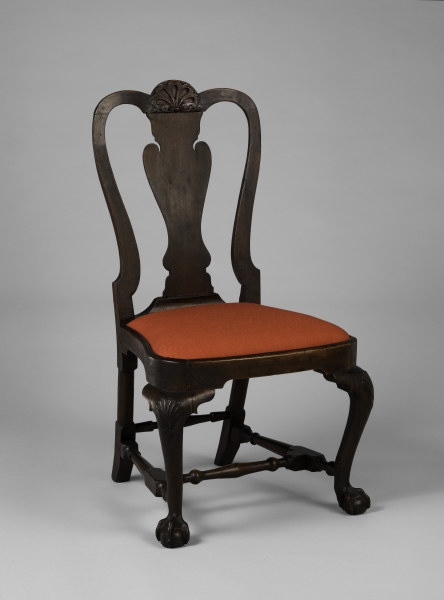
FIG. 8. Side chair, carving attributed to John Welch (1711–1789), Boston, 1755–70. Black walnut, maple, white pine; h 40, Seat w 20½, Seat d 18½. Metropolitan Museum of Art; Rogers Fund, 1925 (25.115.11).
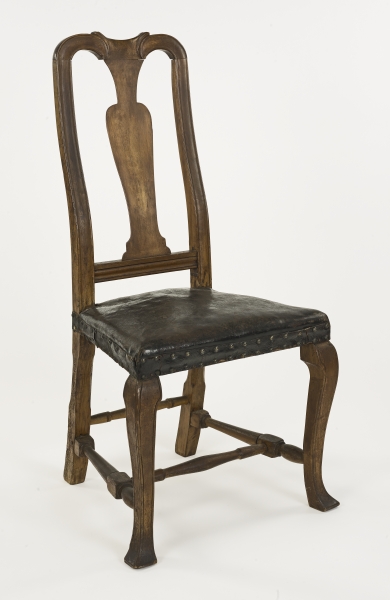
FIG. 9. Side chair, Boston area, 1725–40. Maple; h 40½, w 20½, d 19½. Private collection. Photo, Winterthur Museum.
Key historical references to Boston chair exports occur in the oft-cited 1742 and 1744 Philadelphia newspaper advertisements of upholsterer Plunkett Fleeson. He asserted that he could supply leather-seated, maple chairs “as cheap as from Boston.” Merchant Peter Baynton offered “New England red Leather Chairs” in 1739, positioning himself among several Philadelphia vendors of these Boston exports. Descriptions from these advertisements illuminate some otherwise unusual or eccentric Philadelphia chairs that shifted away from local designs and construction practices in order to imitate certain visual features of the imported Boston chairs, such as Boston-style stretchers grafted onto Philadelphia-style stretchers, creating redundancy. Many personal estate inventory references to “Boston” and “New England” chairs for decades thereafter affirm the impact of Boston exports on the Philadelphia chair market. Together, all of this evidence substantiates the modest nature of chairs made in Boston for export, none of which had compass seats, elaborately shaped stiles, ornamental carving, or other expensive features.37
If the core Georgian chairs (see fig. 1) were made in Boston, physical features associated with them should have percolated through the economic strata of chair design and construction in that community and the surrounding region. They didn’t. Boston-area Queen Anne seating, and that of New England in general, was made with stretchers, unlike the majority of the core chairs.38 Also, only one early set of New England Queen Anne chairs with veneered splats is known, and those splats are rectangular.39 Other features of the core Georgian chairs, such as the shape of the rear legs, lobed knee brackets, a double-ogee bead on the shoe, and integral shoe and rear rail, are rare or unknown in chairs from Boston. In contrast, some Queen Anne chairs from New York embody several of these features.40 A noteworthy and telling feature—the tenoned two-part front bracket—occurs regularly in New York Queen Anne and Chippendale chairs and case furniture, a clear expression of core-chair legacy in that furnituremaking community. The several New York chair sets and many case pieces exhibiting its use represent a third or more of the stylish pieces of New York Queen Anne and Chippendale furniture.41 Only three Boston Chippendale chairs representing three different sets exhibit this feature; no tables or case furniture with it are known. Current study of those chairs hypothesizes that they were made by James Graham, who emigrated from Scotland in 1754, further diminishing the argument for any Boston legacy associated with the core chairs.42 Similarly, some New York seating incorporates the two-piece rear side bracket used consistently in the core chairs. Later Boston chairs have tenoned rear side brackets, but those are neither made of two pieces nor exhibit the complex curves of the New York examples and the core chairs. Many of those later Boston Chippendale chairs have shaped rear legs with no stretchers, but their shaping is unlike that of the core chairs and other New York chairs.
Another legacy is evident in inexpensive turned chairs, which reduce design features of urban style centers to utilitarian or vernacular essences. In New England, these vernacular chairs were tall, with slender proportions, and had ubiquitous New England splats; their New York counterparts were more broadly proportioned and had noticeably wider splats, with a bulbous central massing that recalled the Georgian chair splats (figs. 10, 11). Chairs made by the Dominys of eastern Long Island share influences of New York and Boston: they display the leanness of New England chairs, but a large, apple-like mass dominates the splat (fig. 12).
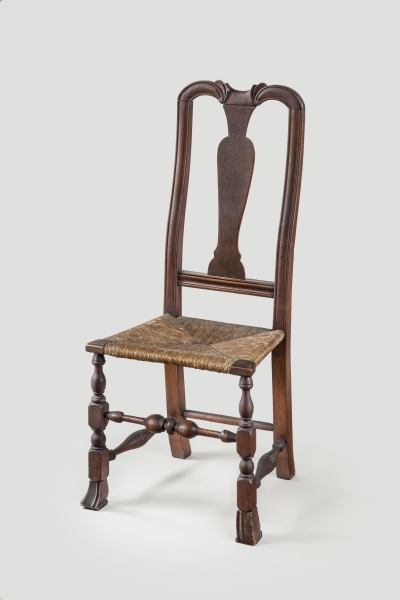
FIG. 10. Side chair, eastern Massachusetts, 1750–80. Soft maple, birch, ash; h 43, w 20, Seat d 14½. Concord Museum; Gift of Cummings E. Davis, 1886 (F903).
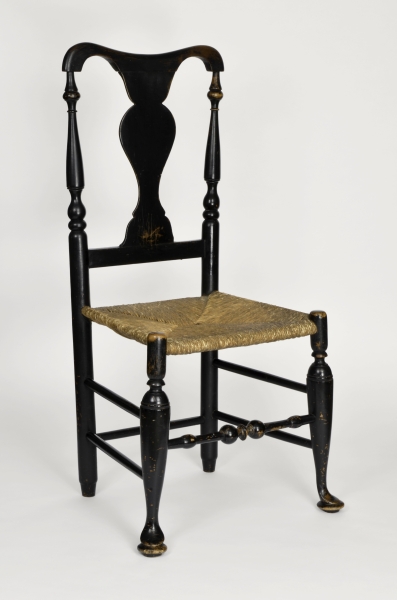
FIG. 11. Side chair, David Coutant (1748–1829), New York or New Rochelle, 1780–1800. Maple, ash; h 40½, w 21¾, d 18½. Winterthur Museum; Gift of the Wunsch Americana Foundation, Inc. (1996.0036).
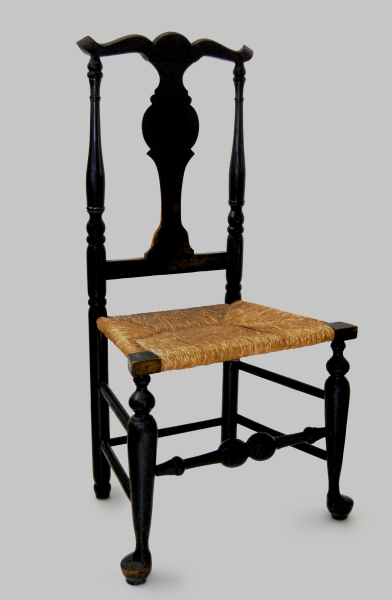
FIG. 12. Side chair, attributed to Nathaniel Dominy V (1770–1852), East Hampton, N.Y., 1790–1810. Maple, hickory; h 39⅝, w 19½, d 14½. Society for the Preservation of Long Island Antiquities (1984.9).
Apart from physical evidence and provenance, errors exist in the “Boston Georgian Chairs” study concerning interpretation of written evidence.43 In her New England Furniture entries, Nancy Evans accepted the study’s conclusions that the chairs originated in Boston, even while correctly pointing out that the values associated with the Boston-export chairs cited in the study were far too low to represent the ambitious Georgian chairs. Thus, all of those historical references and the accompanying contextual remarks, while factually correct in regard to Boston chairs, simply do not apply to these chairs. Notable among these misapplications is the belief that the 1733 reference to “4 doz: Leather Chairs claw feet,” valued at 27 shillings each, documented the presence of carved claw-and-ball feet in Boston at that time.44 As Evans explains, that low valuation signaled a chair that was neither walnut nor carved—probably representing instead a turned maple side chair, perhaps with a carved Spanish foot.45 In 1732, “Leath Chairs maple frames hosbone round feet [i.e., cabriole with pad feet] & Cusn [cushion] Seats” cost £2 each, more than the “claw feet” chairs, but, again, they had no carving, no walnut, and no compass seats.46 Compass seats increased chair values several-fold, as in the “6 Walnut compass chairs & packing” that cost £61.10 in 1748 (about £10 per chair), or another “6 Walnut Compass Seat Chairs covd. with N:ts [Neats] Leather @ 8.5,” totaling £49.10, in 1754.47 Such chairs were special orders, called bespoke work, and not venture cargo.
Of other written evidence cited in the study, the statement that the Apthorp chairs were those listed in Charles the elder’s estate inventory is not supportable. That Apthorp had “10 Mehogony Chairs Yellow Bottoms” valued at £16 in his best parlor is correct. The authors then state that “their brilliantly figured [walnut] veneers could have been mistaken for mahogany by his estate appraisers.”48 Interestingly, Samuel Grant, the upholsterer at the center of the Boston chairmaking and exporting trade, and whose records are cited throughout the study, was one of the appraisers. That such a mistake in wood identification would be made by a leading member of the furniture trade is hard to accept. Moreover, inventory takers would likely have described the Apthorp core chairs as “compass bottoms,” noting the more obvious, expensive, and unusual feature. Also, the surviving Apthorp set has eight—not ten—chairs. Of course, two chairs might have been separated and lost through the years, but none of the sequential chair numbers on the seat frames of the surviving chairs exceeds VIII, and no slip seat number exceeds VIII. Slip seats frequently get separated from their original chairs and placed on other chairs in the set, since all are the same size. The probability is remote that chairs IX and X and slip seats IX and X were lost.
Carving is the last topic to consider. The short assessment is this: because carving relationships determined the direction and outcome of the “Boston Georgian Chairs” study, and because its conclusions are untenable, then the carving relationships as presented must also be untenable. Unpacking all the details of these relationships is beyond the scope of this essay, but a few points are noteworthy and sufficient.
There is no magic to assessing carving. Carving, like the rest of the physical object, embodies properties of design, material, and construction, each of which needs to be considered to an appropriate degree, and then positioned within a reasoned argument that interested and reasonably capable readers can comprehend. A carved chair foot, for example, may look “virtually identical” to a carved card table foot, as declared by the authors in the “Boston Georgian Chair” study, but that statement is incomplete and inconclusive.49 How identical is “virtually”? Such comparative similarities lie on a slippery and subjective index or scale. More important, does the declared degree of similarity establish a historical connection regarding the maker? The reader requires considerably more information. First, what is the standard of identicalness? Claw-and-ball-foot carvings are numerous on the one hand and relatively simple on the other, yielding fewer points of comparison than, say, a complex cartouche or a foliated appliqué on a pediment. Given that such feet are the result of handwork, how much variation in execution is allowable between “identical” renderings that still represent work by a single hand? Second, if two carvings are adjudged to be the same, can they be distinguished from all other renderings? This question addresses how or whether carving similarities inevitably represent work by the same individual. What if two different carvers, aspiring toward similar design objectives, create work that overlaps in the allowable range of variation assigned to “identical” carving? Mid-eighteenth-century Boston supported about a dozen artisans who specialized as carvers.50 Moreover, carved feet may have been sufficiently easy to fashion so that some nonspecialists, namely chair- or cabinetmakers, executed them, thereby increasing the number of foot carvers in Boston. In short, similarities may exist between the feet in question, but they do not establish John Welch as the only carver of these chairs, nor do they necessarily point to him as the carver.
If, for sake of discussion, the reader accepts the premise that the Apthorp crest-rail shell and the Copley picture-frame shell were carved by the same person, other factors undermine the historical argument and cause it to collapse (figs. 13, 14). Furniture historian Luke Beckerdite identified a group of similarly carved Copley frames that accompanied paintings executed from the late 1760s to about 1773. When in New York in 1771, Copley wrote to his stepbrother Henry Pelham about acquiring new frames for his portraits. In one letter, he asked what Pelham had paid “Welch for carving and [Stephen] Whiting for Gilding.” On this basis, it is reasonable to attribute that group of Copley portrait frames to Welch.51 This carving is some thirty-five years after the conjectured date of the Apthorp chairs. Thus, the reader must agree that Welch’s carving style remained static across that entire span, despite a year or so in 1758 and 1759 spent in London, where Welch must have observed work of other carvers, and despite the sheer volume and diversity of work he must have produced over the decades.52 Welch’s age further complicates the picture: In 1735 he was only twenty-four years old and locally trained—probably by maritime carver George Robinson, whose granddaughter Welch married—when he supposedly executed the imaginative, trend-setting Apthorp crest rails.
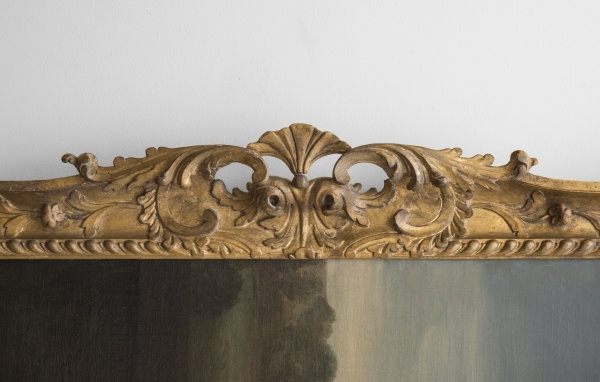
FIG. 13. Detail of frame for the portrait of Jeremiah Lee by John Singleton Copley (1738–1815), frame attributed to John Welch (1711–1789), Boston, 1769. White pine; overall h 95, w 59. Wadsworth Atheneum; Ella Gullup Sumner and Mary Catlin Sumner Collection Fund (1945.58).
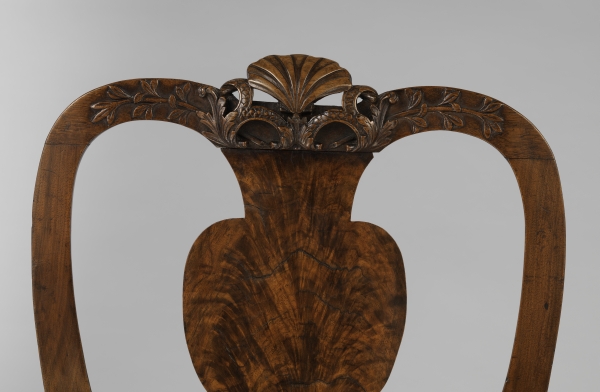
FIG. 14. Crest rail of chair in fig. 1.
Of Welch’s earlier work, Beckerdite cited a 1739 record for ship carving by him, and Freund and Keno found a 1743 record for a ship’s figurehead. These references reinforced Mary Ellen Hayward Yehia’s 1974 characterization of Welch as a maritime carver at this stage in his life. She noted that he kept a shop on the town dock from 1733 until his departure for London in 1758, when he gave up that space to ship carver Isaac Dupee. Several undesignated payments at this time made to Welch by Apthorp and others involved in coastal trade were described by the study authors as for furniture carving, but it seems at least as likely that they were for maritime carving.53 Regardless of the purpose, they do not lead to any specific work. Morrison Heckscher identified payments in 1756 and 1758 for bedstead carvings, but none of these commissions survives. The only other documentation of Welch’s early work is payment in 1748 for undesignated work associated with the restoration of the Boston statehouse.54 That transaction was probably for architectural carving following a disastrous fire. The only carved trim on the Old State House that likely dates from that time is an exterior balcony-door surround on the east gable end, the rest of the architectural work having since undergone multiple remodelings and restorations.55 However, the large scale of carving and its conventionalism—being a highly regulated classical motif—diminish the usefulness of this carved work for identifying an individual practitioner’s furniture carving. An individual hand cannot be identified (figs. 15–19). To extend attribution to a particular carver from a conventionalized pilaster capital, on the one hand, to free-flowing naturalistic carving passages and other furniture details, on the other, only aggravates the problem.
Figs. 15–19. Five conventionally designed pilaster capitals from the mid-eighteenth century that defy carver attribution based on carving features. Three (figs. 15, 18, 19) have been attributed on occasion to John Welch; two are from other regions. See individual captions for information on the source of each capital detail.
FIG. 15. Carved Corinthian capital on east facade of Old State House, Boston, attributed to John Welch, ca. 1748. Bostonian Society. Photo, Gavin Ashworth.
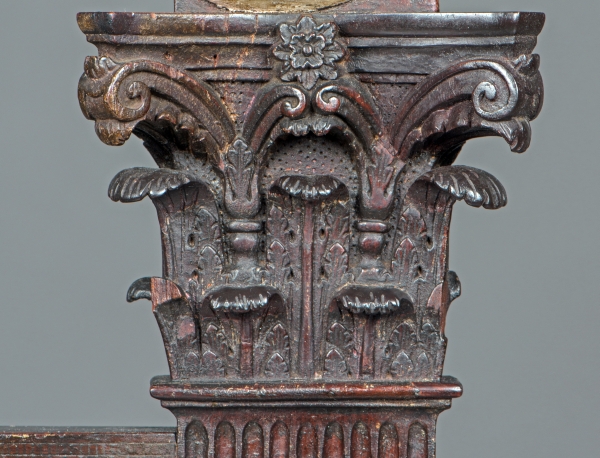
FIG. 16. Carved Corinthian capital on Masonic Master’s armchair, Benjamin Bucktrout (d. 1813), Williamsburg, Va., 1766–77. Mahogany, black walnut; h 65½, w 31¼, Seat d 29½. Colonial Williamsburg Foundation; Museum purchase (1983–317). For an overall view of the chair, see Ronald L. Hurst and Jonathan Prown, Southern Furniture, 1680–1830: The Colonial Williamsburg Collection (Williamsburg, Va., and New York: Colonial Williamsburg Foundation and Harry N. Abrams, 1997), 192–199, cat. no. 54.
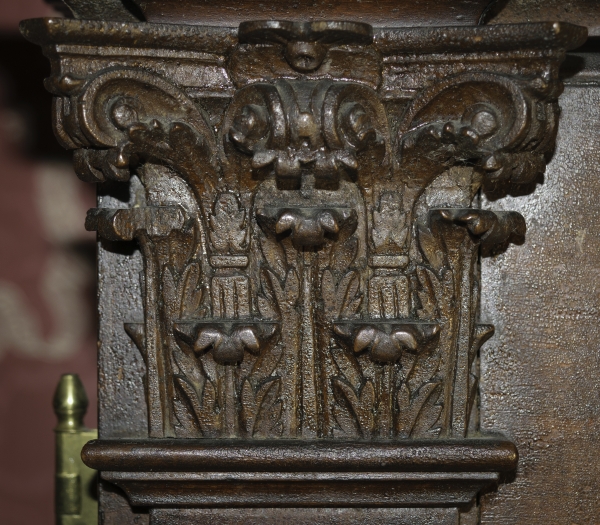
FIG. 17. Carved Corinthian capital on desk and bookcase, probably Hartford, Connecticut, 1765–75, possibly 1767. Cherry, yellow poplar, white pine; h 93½, w 43¼, d 25¼. Private collection. Photo, Brock Jobe. For an overall view of the desk and bookcase, see Thomas P. Kugelman and Alice K. Kugelman, with Robert Lionetti, Connecticut Valley Furniture: Eliphalet Chapin and His Contemporaries, 1750–1800 (Hartford: Connecticut Historical Society Museum, 2005), 314–17, cat. no. 144.
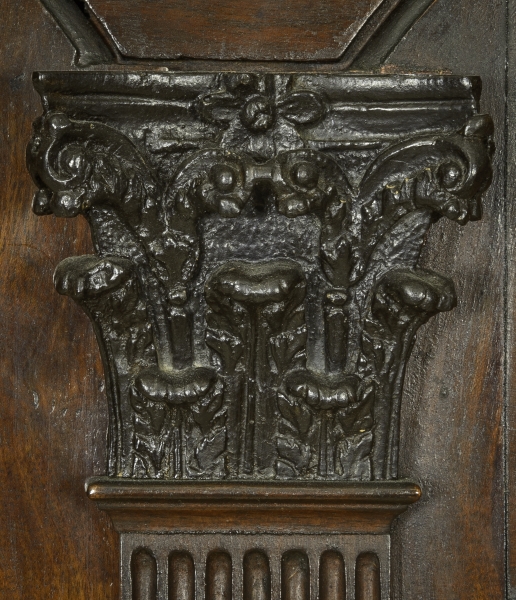
FIG. 18. Carved Corinthian capital on desk and bookcase, 1740–50. Mahogany, sabicu, eastern red cedar, ash, white pine; h 97¼, w 42⅞, d 23½. Winterthur Museum; Gift of Henry Francis du Pont (1960.1134). For an overall view of the desk and bookcase, see fig. 10 on p. 174. Some authors have attributed this carving to John Welch.
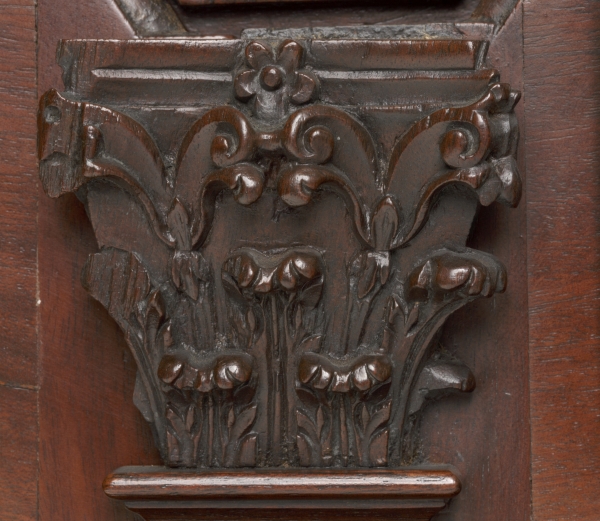
FIG. 19. Carved Corinthian capital on desk and bookcase, Boston, ca. 1751. Mahogany, white pine; h 97, w 40½, d 23. Chipstone Foundation (1991.10). Photo, John R. Glembin. For an overall view of the desk and bookcase, see Alan Miller, “Roman Gusto in New England: An Eighteenth-Century Boston Furniture Designer and His Shop,” in American Furniture 1993, ed. Luke Beckerdite (Milwaukee: Chipstone Foundation, 1993), 175, fig. 20, in which the carving is attributed to John Welch.
Comparisons of the many carved details attributed to Welch by Keno, Freund, and Miller highlight the difficulties of making firm and reliable attributions. The variety of shells on frames, case furniture, and chair crests yields an enormous range of work that makes it difficult to draw historical assumptions about an individual artisan’s output.56 A key comparison directly contradicts the Welch attributions. The expressive shell from a picture frame on Copley’s 1769 portrait of Isaac Smith (fig. 20) closely resembles the crest shell (fig. 21) from the Boston side chair illustrated above (see fig. 8). The shells curl over at their five leafy, tripartite tips. Although all of the tips of the chair crest shell have broken off, the similarities between these two renderings are compelling, both in their similarity to each other and their dissimilarity to any other chair crests. The five teardrop piercings are similarly shaped and backed by a smaller ribbed fan. Foliate carving borders the bottoms, and spherical buttons are in or near the centers of each. Broader comparison with other shells introduces another frame (from Copley’s ca. 1767 portrait of Nicholas Boylston) and a pediment shell from a Boston desk and bookcase while excluding different versions that appear on other Boston furniture.57 Thus, with some assurance, these two shells can be ascribed to the same carver. Assuming the Welch attribution to the carved frames is correct, Welch must also have carved the chair. Comparison of its claw-and-ball feet (fig. 22) to those on the Apthorp chair (fig. 23) shows only superficial similarities; striking differences undermine any attempt to argue that they are by the same carver.58 Thin, angular digits on the Welch chair do not resemble the rounder, more fully rendered digits on the Apthorp chair. Position of the knuckles is not the same. The claws grasp the ball differently, and the ball itself is shaped differently. The rear talon drops straight to the floor on one, whereas the other angles inward. In keeping with the inescapable conclusion that these chairs were not carved by the same artisan, no construction features of the Welch chair (see fig. 8) align with those that distinguish the Apthorp and other core chairs.
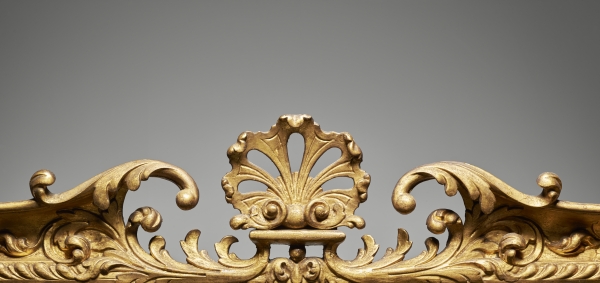
FIG. 20. Detail of frame for the portrait of Isaac Smith by John Singleton Copley, frame attributed to John Welch, Boston, 1769. White pine; overall h 58½, w 48¼. Yale University Art Gallery; Gift of Maitland F. Griggs, B. A. 1896, L. H. D. 1938 (1941.73).
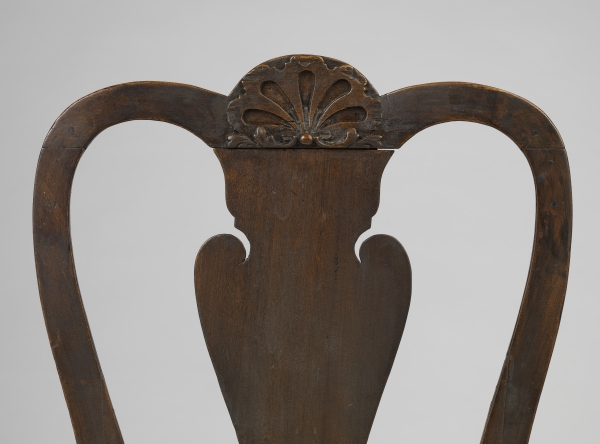
FIG. 21. Crest rail of the chair in fig. 8.
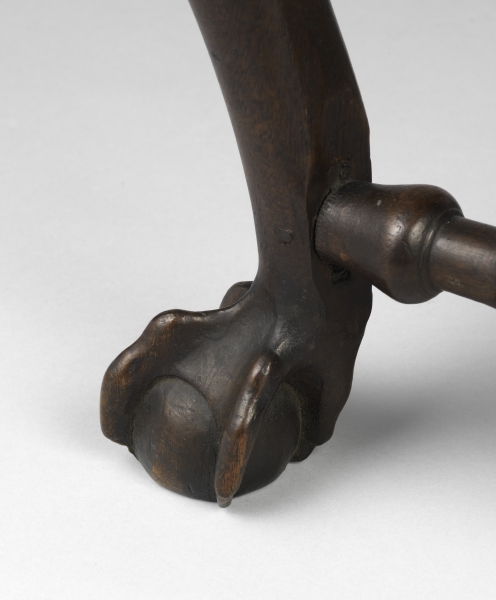
FIG. 22. Carved foot of the chair in fig. 8.
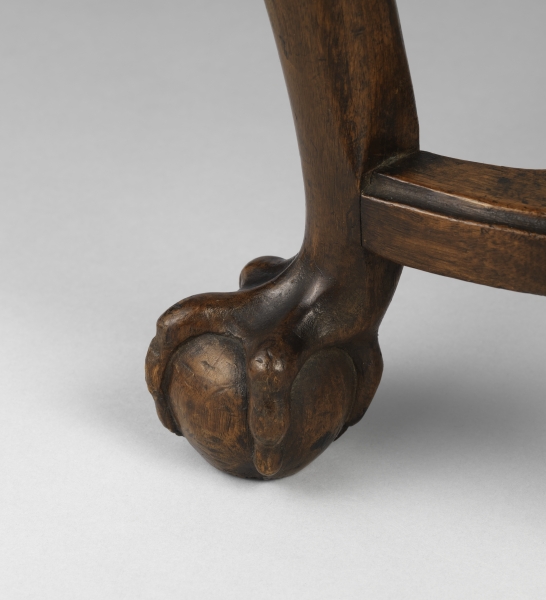
FIG. 23. Carved foot of the chair in fig. 1.
Another observation about carving concerns the pair of armchairs owned in the Van Cortlandt and Van Rensselaer families. Because red gum secondary wood confirms a New York origin, the authors had to disassociate the armchairs’ carving, notably in the crest rail, from their large “Welch” group (figs. 24, 25): “The New York carver was somewhat less skilled than Welch, whose divergent technical repertoire and tool kit produced a much clearer, more naturalistic design.”59 On what basis is one carved crest inferior to the other? How and why does one look clearer and more naturalistic? In fact, all of the free-standing crest shells carved on the core chairs differ from one another in measures similar to these. In short, if physical attributes of carving are to be used as the basis of a historical argument, standards need to build on discernable and measurable foundations; they cannot merely be advanced and accepted on someone’s authority.
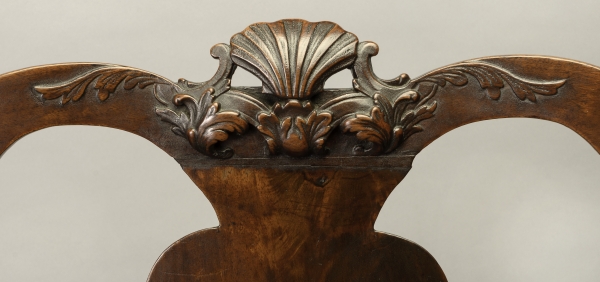
FIG. 24. Crest rail of armchair, New York, 1745–60. Black walnut, red gum, white pine; h 39⅜, w 26¼, d 23. Winterthur Museum; Gift of Henry Francis du Pont (1963.0614.001). For an overall view of this chair, see Joseph Downs, American Furniture: Queen Anne and Chippendale Periods (New York: Viking Press, 1952), cat. no. 26.
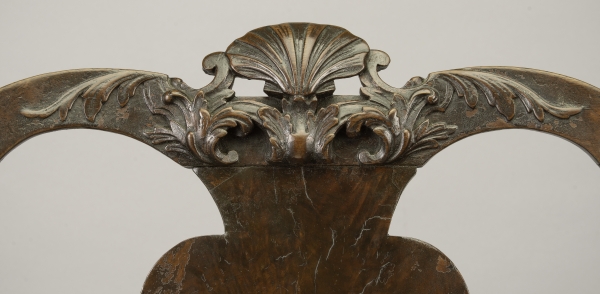
FIG. 25. Crest rail of side chair, New York, 1745–60. Black walnut, maple; h 38⅝, w 22, d 22½. Winterthur Museum; Gift of Henry Francis du Pont (1963.0615.002). For an overall view of this chair, see Richards and Evans, New England Furniture at Winterthur, cat. no. 27.
Neither the evidence cited in the “Boston Georgian Chairs” study nor the historical interpretation of that evidence places the origin of this body of chairs in Boston. The logic supporting those arguments is fundamentally flawed, and carving analysis is insufficiently compelling to compensate for the logical fallacies. That no one should defend false or misleading provenance—a special complaint of the authors—is taken for granted, but the value of using histories of ownership to aid efforts to identify and interpret American furniture, including place of origin, is equally obvious. The dismissal of provenance here and in other writings does not advance furniture history. Origin of these core chairs belongs in New York, not only as the default location based on provenance, but primarily because construction features and other influences tie them to related seating and case furniture made in New York and nowhere else. To move forward, the Boston attributions need to be set aside. Additionally, attributions to Boston of those chairs related to the core chairs need to be reexamined in light of this reassessment of Welch’s work and historically grounded characterizations of what constitutes Boston chairmaking and marketing practices. Physical and written evidence of those noncore chairs needs to be interpreted afresh in ways that are historically reasonable, logical, and productive.
* * *
Special thanks to Frank M. Levy for all his help with this study. The many others who helped at various stages include Mark Anderson, Stephanie Auffret, Elizabeth Bates, Tara Cederholm, Wendy Cooper, Marcee Craighill, Rachel Delphia, Patricia De Rousie-Webb, Nonie Gadsden, Virginia Hart, Barry Harwood, Morrison Heckscher, Julia Hofer, Brock Jobe, Peter Kenny, Joe Kindig, Gregory Landrey, Joshua Lane, Jennifer Lemak, Dean Levy, Michael Melanson, Michael Moskovis, Christine Ritok, Emily Sessions, and Nicholas Vincent. My thanks to them all.

1. Leigh Keno, Joan Barzilay Freund, and Alan Miller, “The Very Pink of the Mode: Boston Georgian Chairs, Their Export, and Their Influence,” in American Furniture 1996, ed. Luke Beckerdite (Milwaukee, Wis.: Chipstone Foundation, 1996), 266–306; Nancy E. Richards and Nancy Goyne Evans, with Wendy A. Cooper and Michael Podmaniczky, New England Furniture at Winterthur: Queen Anne and Chippendale Periods (Winterthur, Del.: Henry Francis du Pont Winterthur Museum, 1997); Joan Barzilay Freund and Leigh Keno, “The Making and Marketing of Boston Seating Furniture in the Late Baroque Style,” in American Furniture 1998, ed. Luke Beckerdite(Milwaukee, Wis.: Chipstone Foundation, 1998), 1–40.
2. The authors call provenance an “indicator of retail history”; Keno, Freund, and Miller, “Very Pink of the Mode,” 267. See also Richards and Evans, New England Furniture, 28–29; Luke Beckerdite and Alan Miller, “Furniture Fakes from the Chipstone Collection,” in American Furniture 2002, ed. Luke Beckerdite (Milwaukee, Wis.: Chipstone Foundation, 2002), 92, n. 5.
3. Keno, Freund, and Miller, “Very Pink of the Mode,” 273–75, figs. 1, 5–6, 9, 11–12.
4. This number includes several more than those in the studies referenced in n. 1. Chair sets not listed among the nine sets with family histories include a set of five side chairs advertised by the Caldwell Gallery in Antiques 137, no. 1 (Jan. 1990): 177; a side chair at the New York State Museum (70.27.1); a cedrela side chair in David H. Conradsen, Useful Beauty: Early American Decorative Arts from St. Louis Collections (St. Louis: St. Louis Art Museum, 1999), cat. no. 5; a side chair with turned stretchers owned privately; another privately owned side chair with turned stretchers and upholstered over the seat rails; and a mahogany side chair at the U.S. Department of State (70.049); another chair from this set is in Bernard and S. Dean Levy, Inc., “Opulence and Splendor”: The New York Chair, 1690–1830 (New York: By the gallery, 1984), 3.
5. Morrison H. Heckscher, American Furniture in the Metropolitan Museum of Art, vol. 2, Late Colonial Period: The Queen Anne and Chippendale Styles (New York: Metropolitan Museum of Art/Random House, 1985), cat. no. 22.
6. Jonathan L. Fairbanks et al., Paul Revere’s Boston: 1735–1818 (Boston: Museum of Fine Arts, Boston, 1975), cat. no. 104. Other chairs in this set include two at Historic Deerfield (see Dean A. Fales Jr., The Furniture of Historic Deerfield [New York: E.P. Dutton, 1976], 47, fig. 80) and two at the Brooklyn Museum (68.182.1-.2).
7. Levy, “Opulence and Splendor,” 5.
8. Despite different family histories, physical features of these chairs indicate they are from the same set; Clement E. Conger and Alexandra W. Rollins, Treasures of State: Fine and Decorative Arts in the Diplomatic Reception Rooms of the U.S. Department of State (New York: Harry N. Abrams, 1991), cat. no. 92, and a second, unpublished chair. Others from this set include side chairs at the New York State Museum (see John L. Scherer, New York Furniture at the New York State Museum [Alexandria, Va.: Highland House, 1984], 5); the Carnegie Museum of Art (83.18); the High Museum (1983.95); and a pair sold as Property of Rear Admiral Edward P. Moore and Barbara Bingham Moore, Sotheby’s, New York, Sept. 26, 2008, lot 16.
9. Levy, “Opulence and Splendor,” 4.
10. John Walton advertisement, Antiques 66, no. 2 (Aug. 1954): 80; New Jersey Historical Society; Important American Furniture, Folk Art and Prints, Christie’s, Sept. 29, 2010, lots 109–10; four owned privately. This chair appears to be identical to cat. no. 27 in Richards and Evans, New England Furniture, although the authors treat it as being from a separate set.
11. Joseph Downs, American Furniture: Queen Anne and Chippendale Periods (1952; reprint, New York: Viking Press, 1967), cat. no. 26.
12. Ibid., cat. no. 106. The similarity is based on knee carving, presence of rear facade brackets, primary wood, and the absence of contrary provenance.
13. Richards and Evans, New England Furniture, cat. no. 26; the privately owned chair is not published. Wendy Cooper discovered a chair from this set in a photograph entitled “Furniture in Salem, Mass. 17th Century” in Newton W. Elwell, Colonial Furniture and Interiors (Boston: George H. Polley & Co., 1896), pl. 48. Pl. 31 in the same volume, entitled “Furniture at Salem, Mass.,” shows a New York federal card table next to a Massachusetts blockfront chest-on-chest, underscoring the movement of furniture between regions, perhaps attributable to collectors, even at this early date. Either this chair or the other example from this set was acquired recently in South Carolina.
14. Richards and Evans, New England Furniture, 48.
15. Chairs lacking veneers include a side chair at the New York State Museum (71.17.1), a cedrela side chair owned privately, a mahogany side chair owned privately, one upholstered over the rails owned privately, a pair of armchairs at Winterthur Museum (1963.0214.001-002), and a side chair at Winterthur (1963.0615.001) that appears to have had a veneered splat originally.
16. One privately owned chair with rear facade brackets has turned stretchers but lacks the rear stretcher. Another chair at the New York State Museum (71.17.1) has full stretchers and rear facade brackets.
17. The overupholstered chair is owned privately. The other two are a pair of armchairs at Winterthur (1963.0214.001-002) and a side chair at Winterthur (1963.0615.001).
18. Chairs with solid knee brackets are the armchairs, the “Caldwell” chairs, and the overupholstered chair. X-radiography at Winterthur in 2014 determined that the armchairs never had knee-bracket mortises cut into the legs.
19. The cherry splat was identified by eye by the author and by Bernard and S. Dean Levy when another chair of the set was published in Levy, “Opulence and Splendor,” 4.
20. Acc. no. 70–049; Property of Edward P. Moore, lot 39. The latter chair was catalogued as made of walnut, but parenchyma is visible, indicating mahogany.
21. Conger and Rollins, Treasures of State, cat. no. 4.
22. Microanalysis was performed on some slip seats of the various chair sets. Microanalysis of other slip seats identified visually may reveal more usage of red gum, a wood that is not well known to furniture scholars and can look similar to maple or cherry.
23. The authors concur, declaring these two armchairs to be contemporary New York copies to fill out a set of imported Boston side chairs; Keno, Freund, and Miller, “Very Pink of the Mode,” 289–91.
24. Ibid., 276–77.
25. For examples, see a Queen Anne side chair at the Van Cortlandt House Museum (VC.1990.68) and a Chippendale side chair at the Metropolitan Museum of Art (46.152.1).
26. Heckscher, American Furniture, cat. nos. 92, 105. The unpublished high chest of drawers signed by New York maker Robert Carter has birch drawer sides. A New York side chair nearly identical to a set owned in the Verplanck family has a birch rear rail (Bernard & S. Dean Levy, Inc., inv. no. 6336; another member of the set is in Charles F. Hummel, A Winterthur Guide to American Chippendale Furniture: Middle Atlantic and Southern Colonies [New York: Crown, 1976], fig. 7). The Beekman settee also uses birch.
27. Splat veneers of the Apthorp set also match the “Caldwell” chairs, which have no early provenance.
28. Important American Furniture, Folk Art and Prints, lots 109–10, “Lot Notes.”
29. The label was written by Elizabeth H. McCalla (1850–1920) and mentions her daughter Elizabeth, born in 1875.
30. Adam Bowett argues that conventional twentieth-century dating schemes for English furniture are too early; Bowett, “A New Chronology for English Walnut-Veneered Furniture, 1670–1740,” Antiques 161, no. 6 (June 2002): 114. Using time-documented examples, he finds the first reference in England to compass-seat chairs to be 1726 or 1728, when the seat form is combined with a curved back; adding complex curves of any kind to the stiles pushes the date to 1732. See Adam Bowett, English Furniture, 1660–1714: From Charles II to Queen Anne (Woodbridge, Suffolk, Eng.: Antique Collectors’ Club, 2009), 171–77. Consequently, London prototypes for the Apthorp and related chairs likely date between 1735 and 1745.
31. See n. 13. A 1913 comment about the Osgood chair stated, “Originally, it stood in the house of Moll Pitcher [c. 1736–1813], the famous soothsayer; there it attracted the attention of many distinguished persons, some of whom undoubtedly sat in it.” Mary H. Northend, “Early Chairs,” American Homes and Gardens 10, no. 4 (Apr. 1913): 137–39.
32. Mabel Munson Swan, “Coastwise Cargoes of Venture Furniture,” Antiques 55, no. 4 (Apr. 1949): 278–80.
33. Other customers lived in Albany, Newburgh, and Fishkill, N.Y.; Philadelphia and Germantown, Pa.; Wilmington, Del.; Fayetteville, N.C.; Pinewood and Charleston, S.C.
34. Mid-nineteenth-century improvements in transportation and communication began to erode the foundations of regionalism in the decorative arts and, with it, local preferences.
35. Virginia Harrington, The New York Merchant on the Eve of the Revolution (Gloucester, Mass.: Peter Smith, 1964), 212.
36. For examples, see Mary Fitch Oliver and Andrew Oliver by John Smibert, Boston, 1732, and John Hancock by John Singleton Copley, Boston, 1765, in Fairbanks, Paul Revere’s Boston, cat. nos. 105, 173. These portraits are also illustrated in this volume in the essays by Gregory J. Landrey and Gerald W. R. Ward.
37. For detailed analysis, see Philip D. Zimmerman, “The ‘Boston Chairs’ of Mid-Eighteenth-Century Philadelphia,” in American Furniture 2009, ed. Luke Beckerdite (Milwaukee, Wis.: Chipstone Foundation, 2009), 140–58.
38. Some Queen Anne chairs made along the Connecticut River, notably in Wethersfield and Saybrook, were made without stretchers. See Robert F. Trent, “New London County Joined Chairs, 1720–1790: Legacy of a Provincial Elite,” and Robert F. Trent with Nancy Lee Nelson, “A Catalogue of New London County Carved Chairs,” Connecticut Historical Society Bulletin 50, no. 4 (Fall 1985), esp. nos. 1–3, 5–6, 8–10, 28–30.
39. Richards and Evans, New England Furniture, cat. no. 13. The side chair and armchair are probably from the same set. All of the shaped seat rail returns flanking the front legs of the side chair appear to be later additions.
40. For examples, see Heckscher, American Furniture, cat. no. 23 (40.100.1); Downs, American Furniture, cat. no. 105 (1952.0239); Van Cortlandt House Museum (VC.1990.68).
41. A brief survey reveals use in three different chairs at Winterthur: Downs, American Furniture, cat. nos. 150, 159, and Hummel, American Chippendale Furniture, fig. 11; a set at the Metropolitan Museum in Heckscher, American Furniture, cat. no. 34; and other privately owned chairs. See also n. 24. Case furniture at Winterthur includes a chest of four drawers with fitted top drawer, another chest of four drawers, a slant-lid desk, and the Samuel Prince attributed desk and bookcase (Hummel, American Chippendale Furniture, figs. 15, 16, 18, 19). A chest-on-chest at the Metropolitan Museum (Heckscher, American Furniture, cat. no. 146) also has tenoned two-part brackets.
42. See Kemble Widmer, “A Scotsman, Thomas Chippendale, and the Green Dragon Tavern,” in this volume.
43. Unlike the logical fallacies that nullify the argument, these errors merely weaken it.
44. Quoted in Keno, Freund, and Miller, “Very Pink of the Mode,” 275.
45. Richards and Evans, New England Furniture, cat. no. 27.
46. Samuel Grant account book, Jan. 22, 1732, 131, Massachusetts Historical Society, Boston, as quoted in Brock Jobe, “The Boston Furniture Industry, 1720–1740,” in Boston Furniture of the Eighteenth Century: A Conference Held by the Colonial Society of Massachusetts, 11 and 12 May 1972, ed. Walter Muir Whitehill, Jonathan L. Fairbanks, and Brock Jobe, Publications of the Colonial Society of Massachusetts, vol. 48 (Boston: Colonial Society of Massachusetts, 1974), 42.
47. Quoted in Keno, Freund, and Miller, “Very Pink of the Mode,” 270; invoice from Thomas Downe to Edward Hutchinson, dated Mar. 27, 1754, Downs Collection, Winterthur Library (12x042).
48. Keno, Freund, and Miller, “Very Pink of the Mode,” 272–73.
49. Ibid., figs. 9, 12. The reader is invited to compare them critically.
50. Welch and almost a dozen other carvers working from about 1730 to 1775 are named in Mabel M. Swan, “Boston’s Carvers and Joiners, Part I: Pre-Revolutionary,” Antiques 53, no. 3 (Mar. 1948): 198–201. Milo M. Naeve adds William Burbeck to the list in “John Glinn’s Clock Case of 1750 for Henry Bromfield of Boston, Massachusetts,” Furniture History 28 (1992): 29, n. 31. William Macpherson Hornor Jr. discusses carving by nonspecialists in Blue Book, Philadelphia Furniture: William Penn to George Washington (Philadelphia: Privately printed, 1935), 93.
51. For details of Welch’s life and frame carving, see Swan, “Boston’s Carvers and Joiners,” 198–99; Luke Beckerdite, “Carving Practices in Eighteenth-Century Boston,” in New England Furniture: Essays in Memory of Benno M. Forman, ed. Brock W. Jobe, Old-Time New England 72 (Boston: Society for the Preservation of New England Antiquities, 1987), 142–48; and Morrison H. Heckscher, “Copley’s Picture Frames,” in John Singleton Copley in America, ed. Carrie Rebora and Paul Staiti (New York: Metropolitan Museum of Art, 1995), 151–57.
52. The static nature of Welch’s carving contradicts Alan Miller’s 1993 characterization that “a tradesman with a career as long as Welch’s was bound to have an evolving style”; Miller, “Roman Gusto in New England: An Eighteenth-Century Boston Furniture Designer and His Shop,” in American Furniture 1993, ed. Luke Beckerdite (Milwaukee, Wis.: Chipstone Foundation, 1993), 170.
53. Keno, Freund, and Miller, “Very Pink of the Mode,” 276. The payments were made through Grant’s account book. Such transactions resolved multiple indebtedness without requiring scarce specie.
54. Beckerdite, “Carving Practices,” 143–44; Freund and Keno, “Making and Marketing,” 35; Mary Ellen Hayward Yehia, “Ornamental Carving on Boston Furniture of the Chippendale Style,” in Whitehill, Fairbanks, and Jobe, Boston Furniture of the Eighteenth Century, 213; Morrison H. Heckscher and Leslie Greene Bowman, American Rococo, 1750–1775: Elegance in Ornament (New York and Los Angeles: Metropolitan Museum of Art and Los Angeles County Museum of Art, 1992), 135.
55. Sara B. Chase, “A Brief Survey of the Architectural History of the Old State House, Boston, Massachusetts,” Old-Time New England 68, nos. 3–4 (Winter/Spring 1978): 48.
56. Compare shells in figs. 13 (Jeremiah Lee frame) and 14 (Apthorp chair crest) with that in fig. 5 (Fayerweather chair crest), with the lower shell drawer from a Boston high chest of drawers at the Baltimore Museum of Art (Keno, Freund, and Miller, “Very Pink of the Mode,” fig. 25), and with fig. 21 (Metropolitan Museum side chair crest).
57. For the frame and the desk and bookcase shells, see Miller, “Roman Gusto,” 169–70, figs. 10–12. For an unrelated version of this shell, see Heckscher, American Furniture, cat. no. 158.
58. This comparison assumes that the feet were not carved by another artisan, in keeping with the Keno, Freund, and Miller Boston Georgian Chair study.
59. Keno, Freund, and Miller, “Very Pink of the Mode,” 289–90.

